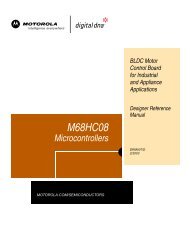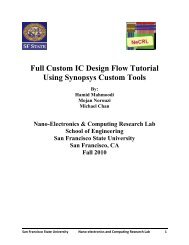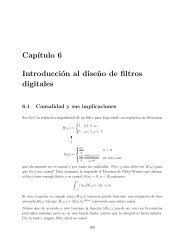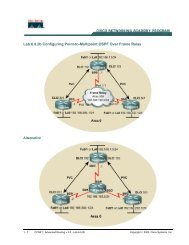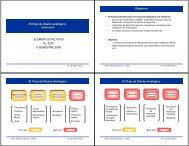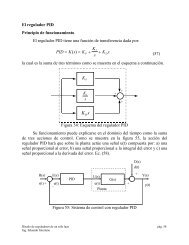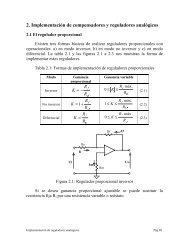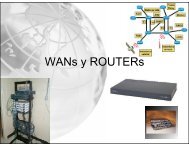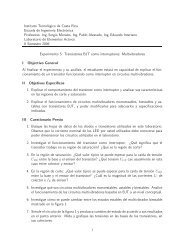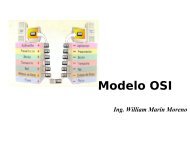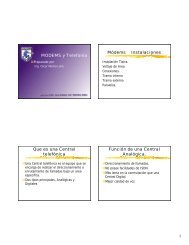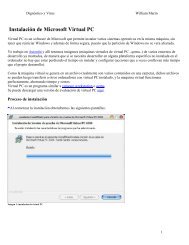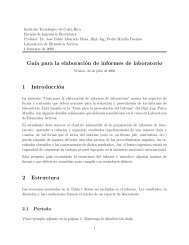Xilinx UG393 Spartan-6 FPGA PCB Design Guide
Xilinx UG393 Spartan-6 FPGA PCB Design Guide
Xilinx UG393 Spartan-6 FPGA PCB Design Guide
You also want an ePaper? Increase the reach of your titles
YUMPU automatically turns print PDFs into web optimized ePapers that Google loves.
Chapter 4: <strong>PCB</strong> Materials and Traces<br />
Loss Tangent<br />
Loss tangent is a measure of how much electromagnetic energy is lost to the dielectric as it<br />
propagates down a transmission line. A lower loss tangent allows more energy to reach its<br />
destination with less signal attenuation.<br />
As frequency increases, the magnitude of energy loss increases as well, causing the highest<br />
frequency harmonics in the signal edge to suffer the most attenuation. This appears as a<br />
degradation in the rise and fall times.<br />
Skin Effect and Resistive Losses<br />
The skin effect is the tendency for current to flow preferentially near the outer surface of a<br />
conductor. This is mainly due to the magnetic fields in higher frequency signals pushing<br />
current flow in the perpendicular direction towards the perimeter of the conductor.<br />
As current density near the surface increases, the effective cross-sectional area through<br />
which current flows decreases. Resistance increases because the effective cross-sectional<br />
area of the conductor is now smaller. Because this skin effect is more pronounced as<br />
frequency increases, resistive losses increase with signaling rates.<br />
Resistive losses have a similar effect on the signal as loss tangent. Rise and fall times<br />
increase due to the decreased amplitude of the higher harmonics, with the highest<br />
frequency harmonics being most affected. In the case of 10 Gb/s signals, even the<br />
fundamental frequency can be attenuated to some degree when using FR4.<br />
For example, an 8 mil wide trace at 1 MHz has a resistance on the order of 0.06Ω/inch,<br />
while the same trace at 10 Gb/s has a resistance of just over 1Ω/inch. Given a 10 inch trace<br />
and 1.6V voltage swing, a voltage drop of 160 mV occurs from resistive losses of the<br />
fundamental frequency, not including the losses in the harmonics and dielectric loss.<br />
Choosing the Substrate Material<br />
The goal in material selection is to optimize both performance and cost for a particular<br />
application.<br />
FR4, the most common <strong>PCB</strong> substrate material, provides good performance with careful<br />
system design. For long trace lengths or high signaling rates, a more expensive substrate<br />
material with lower dielectric loss must be used.<br />
Substrates, such as Nelco, have lower dielectric loss and exhibit significantly less<br />
attenuation in the gigahertz range, thus increasing the maximum bandwidth of <strong>PCB</strong>s. At<br />
3.125 Gb/s, the advantages of Nelco over FR4 are added voltage swing margin and longer<br />
trace lengths. At 10 Gb/s, a low-loss dielectric like Nelco is necessary unless high-speed<br />
traces are kept very short.<br />
The choice of substrate material depends on the total length of the high-speed trace and<br />
also the signaling rate.<br />
What-if analysis can be done in HSPICE simulation to evaluate various substrate<br />
materials. By varying the dielectric constant, loss tangent, and other parameters of the <strong>PCB</strong><br />
substrate material. The impact on eye quality can be simulated to justify the use of higher<br />
cost materials. The impact of other parameters such as copper thickness can also be<br />
explored.<br />
42 www.xilinx.com <strong>Spartan</strong>-6 <strong>FPGA</strong> <strong>PCB</strong> <strong>Design</strong> and Pin Planning<br />
<strong>UG393</strong> (v1.1) April 29, 2010



